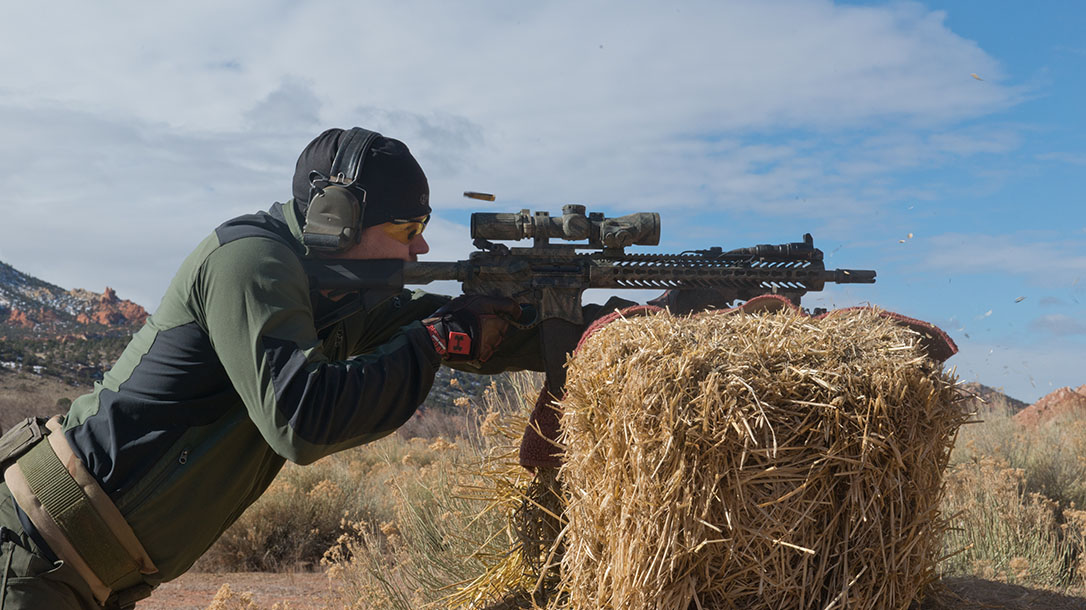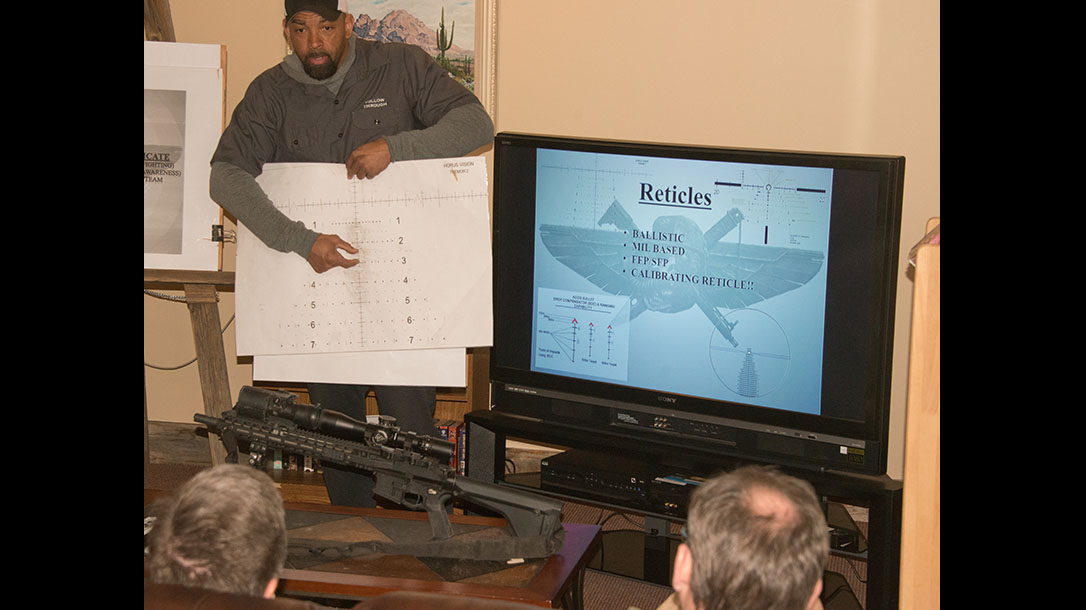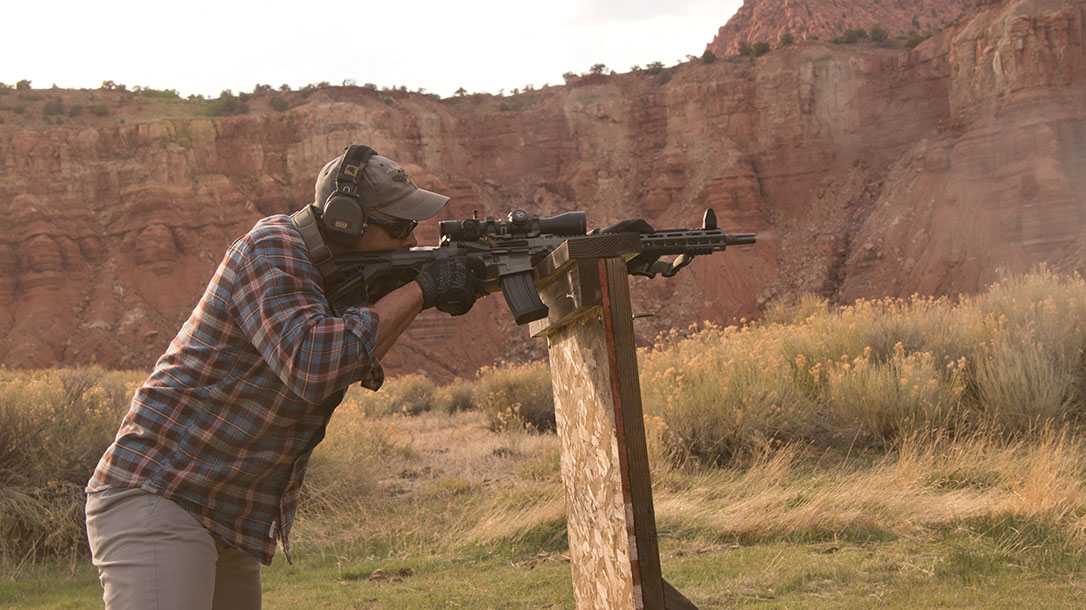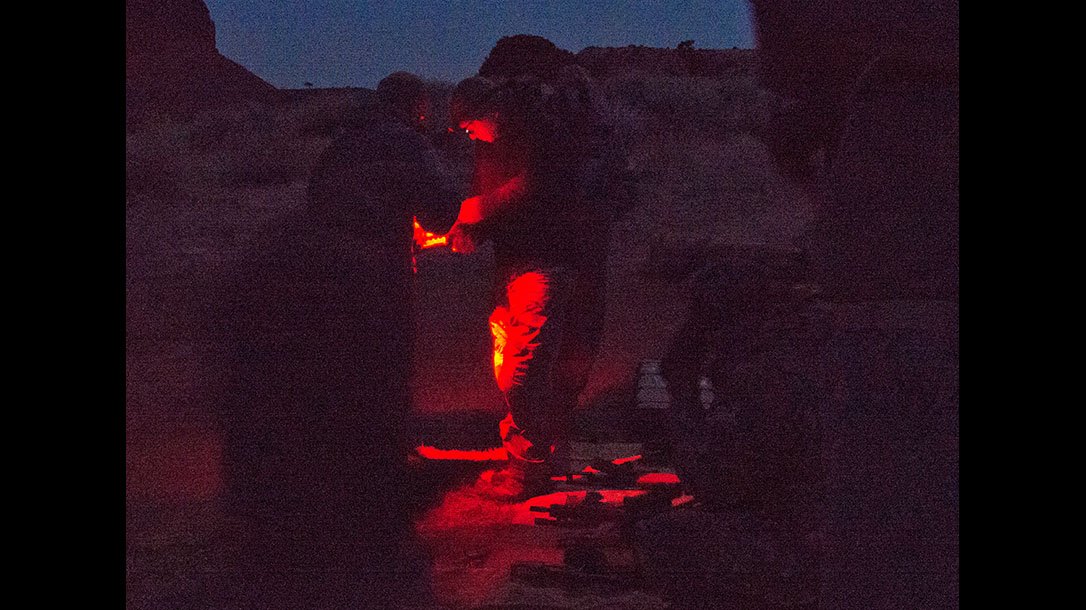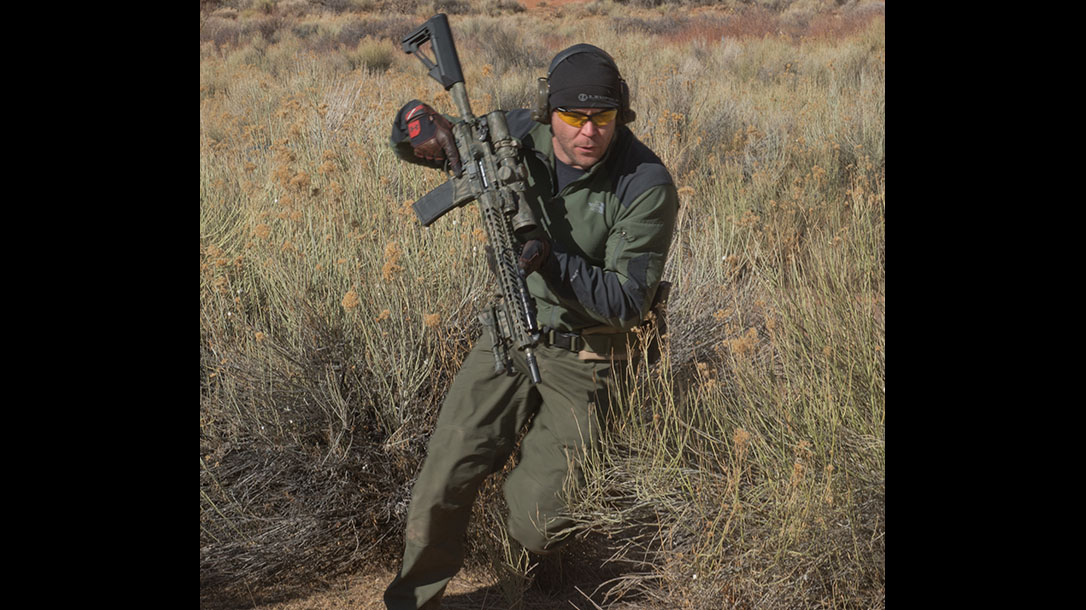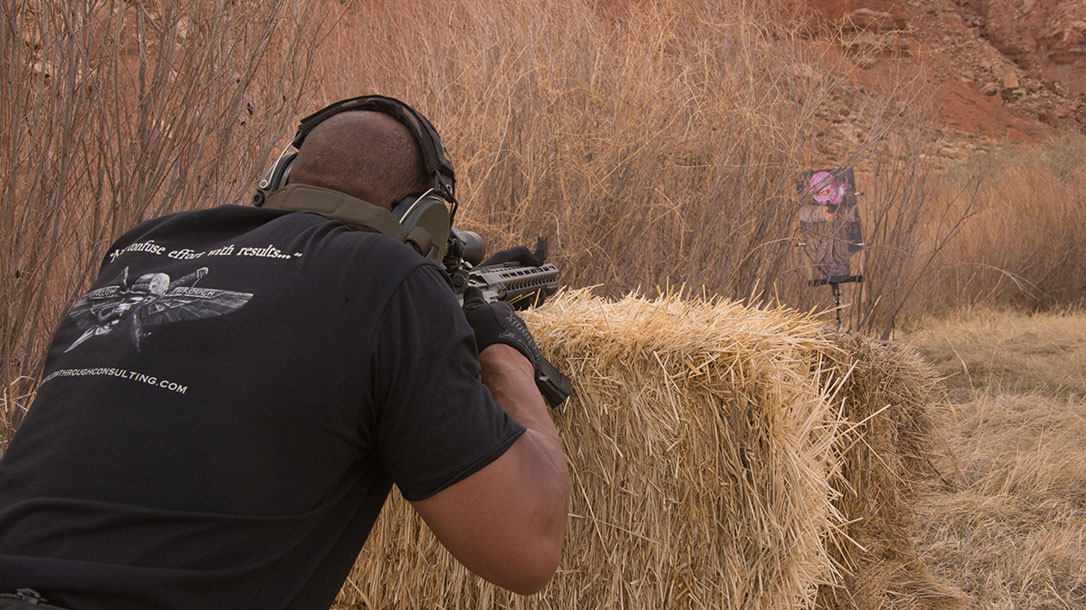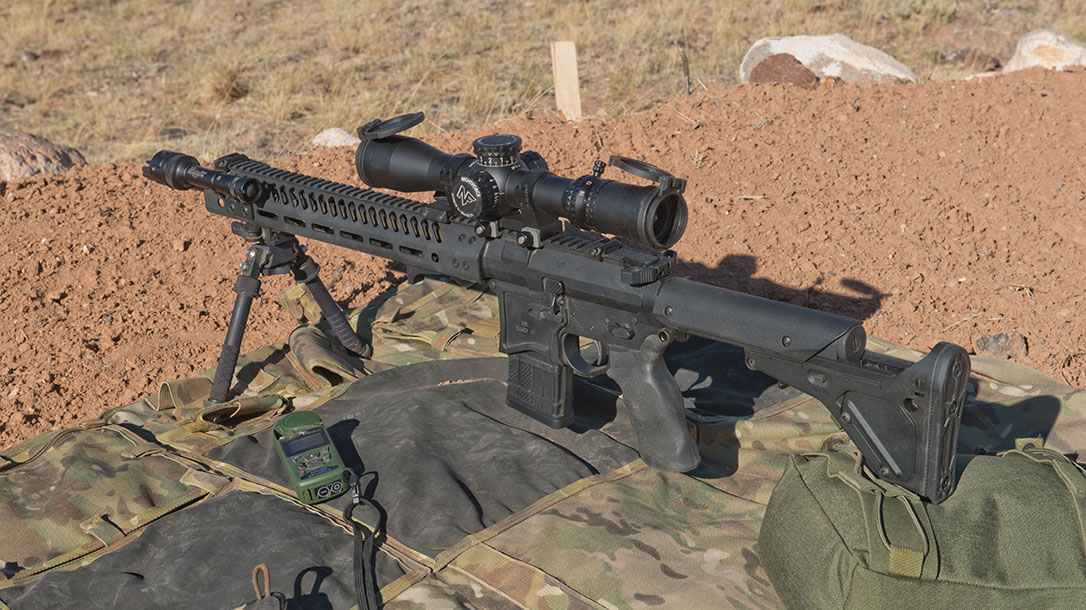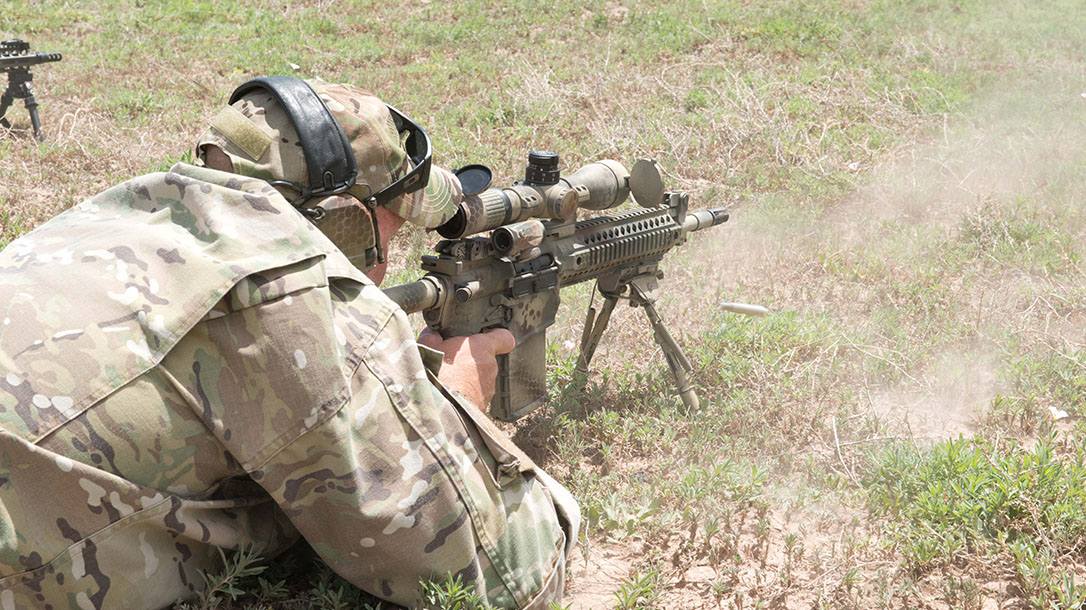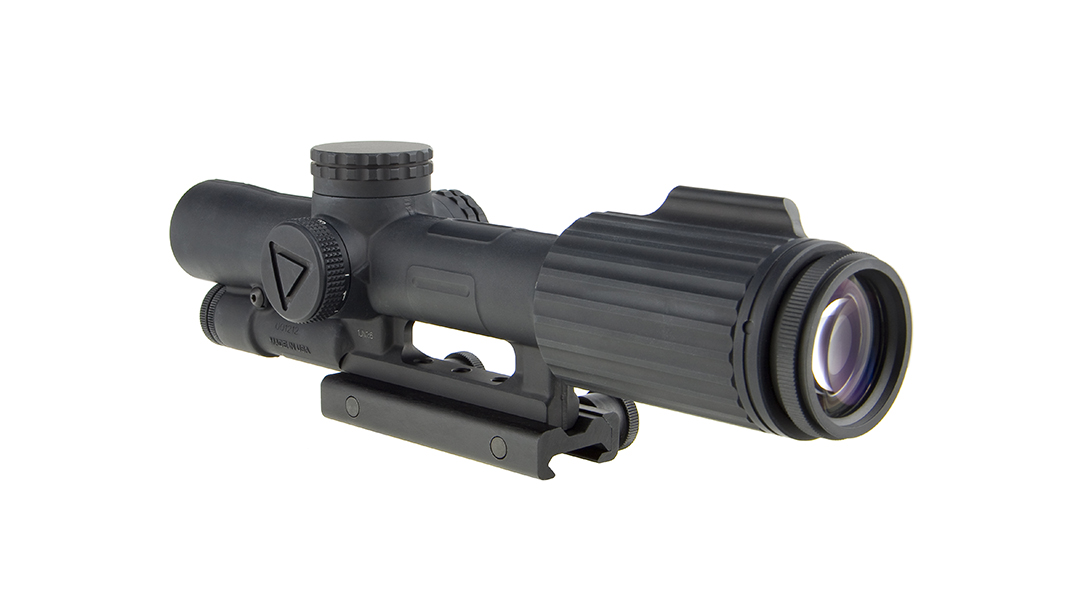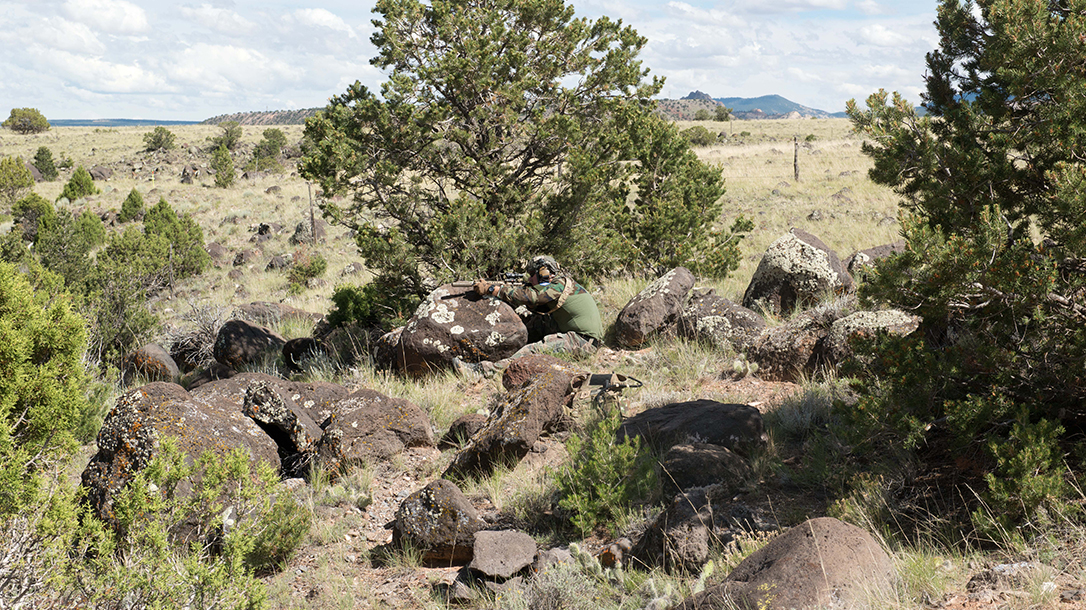Most of today’s carbine training is driven by marketing the AR-15 as an “urban rifle,” a label that came about a couple decades ago, when the platform was barely a passing thought among shooters. Thanks to visionaries like Clint Smith, however, it became useful at close range and a perfect choice for officers, home defenders and many others. But even Clint knew it could be used for more—much more.
However, when the AR-15 became the most popular kid on the block, it was almost relegated to being a rifle used at pistol distances. This concept sells training courses and is great for videos and social media traffic. Unfortunately, it severely limits the real value of a carbine. If you are looking to get more out of your AR-platform rifle, Follow Through Consulting’s Scoped Carbine class is just the ticket.
Advertisement — Continue Reading Below
Trigger Time
Twenty-plus years as a Marine, much of it in Force Recon, followed by years of contracting has left Buck Doyle with more “been there, done that” experience than most. After multiple deployments where he survived battle wounds and logging significant time as a trainer, he is the real deal. He is friendly, professional and personable. And he doesn’t wear his experience on his sleeve or throw it in your face. In fact, his isn’t a classroom populated by endless war stories—just lots of trigger time and hands-on experience.
For Doyle, shooting equates to hits on target in real-world conditions while under stress and moving around natural terrain. His targets are man-sized or smaller without regard to range. He makes sure you know your equipment and how to apply it, using the latest technology where possible, including modern reticles and ballistic programs. There’s no scope knob turning, calculators or rangefinders. Every form of movement is taught to be purposeful and pragmatic; you need to have a destination and a reason to go. You won’t find head swinging, pirouettes or range dances on Doyle’s range. He just wants you to practice for your conditions.
Doyle teaches shooters to “stay in the fight” with their mind engaged, thinking about where to go, how to get there, how to survive and how to win. He wants you to constantly communicate with your partners or team members, whether verbally, using hand signals or through an unspoken understanding born of constant training together. As Doyle relayed to us, fighting is seldom static or contrived, so learning to communicate in every environment is critical. In the end, you need to do all of this while running your carbine using nothing other than what you have on you or the rifle.
Advertisement — Continue Reading Below
Scopes
Follow Through Consulting’s Scoped Carbine class is primarily based on the use of the Horus T2 and T3 reticles. If your scope is not equipped with either, Doyle will provide a one that is. Designed by Todd Hodnett of Applied Ballistics, these reticles are based on input from experienced special operations troops. They are simple, versatile and easy to use.
After some detailed instruction on how to use these reticles, you learn to range, read the wind, hold and press the trigger. Everything is done in the scope—there are no knobs to turn, no complicated math conversions. By the time you are done, you are hitting 12-inch targets almost at will using nothing but your rifle and scope as far out as 800 meters. In fact, these reticles have wind dots that are spaced in roughly 3-mph increments, eliminating the need for conversion tables. This is about as simple as it gets.
First Hits
Doyle starts with a simple zero that’s as close to the middle of a 6-inch steel “lollipop” target at 100 yards as possible. Your next range is 350 meters. Most of the first day is spent from 300 to 800 meters learning to use the T2 or T3 reticle, understanding simple ballistics and reading the wind—lots of wind. At the end of the day, you “true” your rifle and ammunition using an Applied Ballistics-equipped Kestrel wind meter, giving you solid holds from 50 to 600 meters. Having seen students with zero time on a scoped carbine hitting 12-inch targets at 508 meters repeatedly, I can honestly say that it works, and it’s a ton of fun at the same time.
Advertisement — Continue Reading Below
The second day of the course day adds movement (and adrenaline) to the process. Moving from hay bale to barricade through natural terrain, you engage ISPC-sized steel along with LaRue knockdown targets from 100 to 400 meters. The knockdown targets pop up at close range, allowing you to use offset sights or backup reflex sights. This sounds easy, but it’s not if your heart rate is elevated. Students are encouraged to move at their own pace because it’s not a race. Nothing is on a timer. There are no split times. Load, move and shoot—purposefully, not frantically. It’s not a race, a competition or a video for your buddies to watch later. This course is training you for real fights.
Putting It All Together
The last day of the course puts everything together. The day starts with students engaging 12-inch targets on a different range where they are harder to see, nestled in trees and shadows, all with the sun in your eyes. Nothing is at an “even range,” it’s all in between marked distances. You get two shots and then move on to the next target. There’s no time to consult your phone, tablet, book or computer—just find the target, range it and shoot it. After a few runs, the students go back to the running course.
Starting with your rifle and a couple of magazines, you move to barricades and hay bales. You scan the area and wait for Doyle to tell you what to shoot with a set number of rounds. Next, you scan the backdrop. Move up through the anything-but-pristine positions and engage the target until it’s down. When you run out of ammo, move behind cover, reload, finish the fight and then move on. Next, you’ll find yourself running next to a river and engaging dropping paper targets, static steel and LaRue knockdown targets as far away as 500 meters. This sequence is an eye-opener, and by the time you are done, you have accomplished things you never thought you could.
Advertisement — Continue Reading Below
Buck Doyle’s Elite Training
Follow Through Consulting’s Teasdale range is nestled in the Red Cliffs at the entrance to Capitol Reef National Park in Utah. With thousands of acres of private land, it offers distances, backdrops and natural terrain unseen to most, including law enforcement and military personnel. It provides a training opportunity like none other, as Buck Doyle has terrain courses that cover miles of territory.
Many attend this class with no experience on an AR, but knowing how to use it prior to attending is helpful. You will simply get more out of it. All you need is a good rifle, a proper optic, good ammunition and clothing to match the event. If you are in the military or law enforcement, you must train how you fight, but most shooters can do without the 4 tons of gear they bought but will never use. This course is all about shooting and less about dressing up.
Advertisement — Continue Reading Below
Doyle moves at the speed of the class, so the pace is relaxed yet engaging. He wants you to learn and have a good time, not beat you into the ground. You could take your teenage daughter to the course without issue. In fact, both his daughters run that course like a pro. He is a family man, and the class is family friendly.
If you are looking for a place to lower your split times engaging multiple targets spaced at 3 yards, this course is not for you. However, if you want to learn how to really use your carbine, Follow Through Consulting’s Scoped Carbine course is worth a close look.
For more information, visit followthroughconsulting.com.
Advertisement — Continue Reading Below
